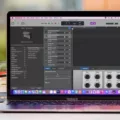If you’re an iPad user, you’re probably familiar with the Safari web browser. It’s the default browser that cmes pre-installed on all iOS devices, including the iPad. While Safari is a great browser, it has some settings that you may want to adjust to make your browsing experience smoother and more secure. In this blog post, we’ll take a look at some of the key settings in Safari that can help you get the most out of your iPad.
First, let’s talk about privacy and security. Safari has a few options related to this area that can help keep your browsing activity safe and secure. The Private Browsing setting will prevent websites from saving cookies or other data on your device, whch can help protect your privacy when browsing. You can also enable Fraudulent Website Warnings, which will notify you if the website you are visiting is known to be fraudulent or malicious. Additionally, you can enable “Do Not Track”, which will tell websites not to track your online activity.
Next up is search engine settings. By default, Safari uses Google as its search engine but you can easily change this by tapping on “Settings” in the top-right corner of Safari and then tapping “Search Engine” uder Advanced Settings. From there, you can choose from Bing or Yahoo as well as other search engines like DuckDuckGo and Qwant.
Finally, let’s discuss content blocking settings in Safari on iPadOS 14 and later versions. Content blocking allows you to block certain types of content such as pop-ups and adult websites from appearing while browsing the web with Safari on your iPad. To enable content blocking, go to Settings > Safari > Content Blockers and toggle it on. You can then customize how strict or lenient these filters should be applied by tapping “Advanced Settings” underneath the Content Blockers heading.
These are just a few of the many settings in Safari for iPad that can help make your browsing experience safer and more enjoyable! We hope this blog post was informative for those looking to get the most out of their iPad’s web browser experience!
Accessing Safari Settings on an iPad
Safari settings on an iPad can be found by tapping the Settings icon on the Home screen. From the list of settings on the left, tap Safari to adjust your settings. You can choose which search engine to use, as well as adjust your AutoFill settings for filling out forms on the web. Additionally, you can customize your privacy and security settings, manage website data and cookies, and more.
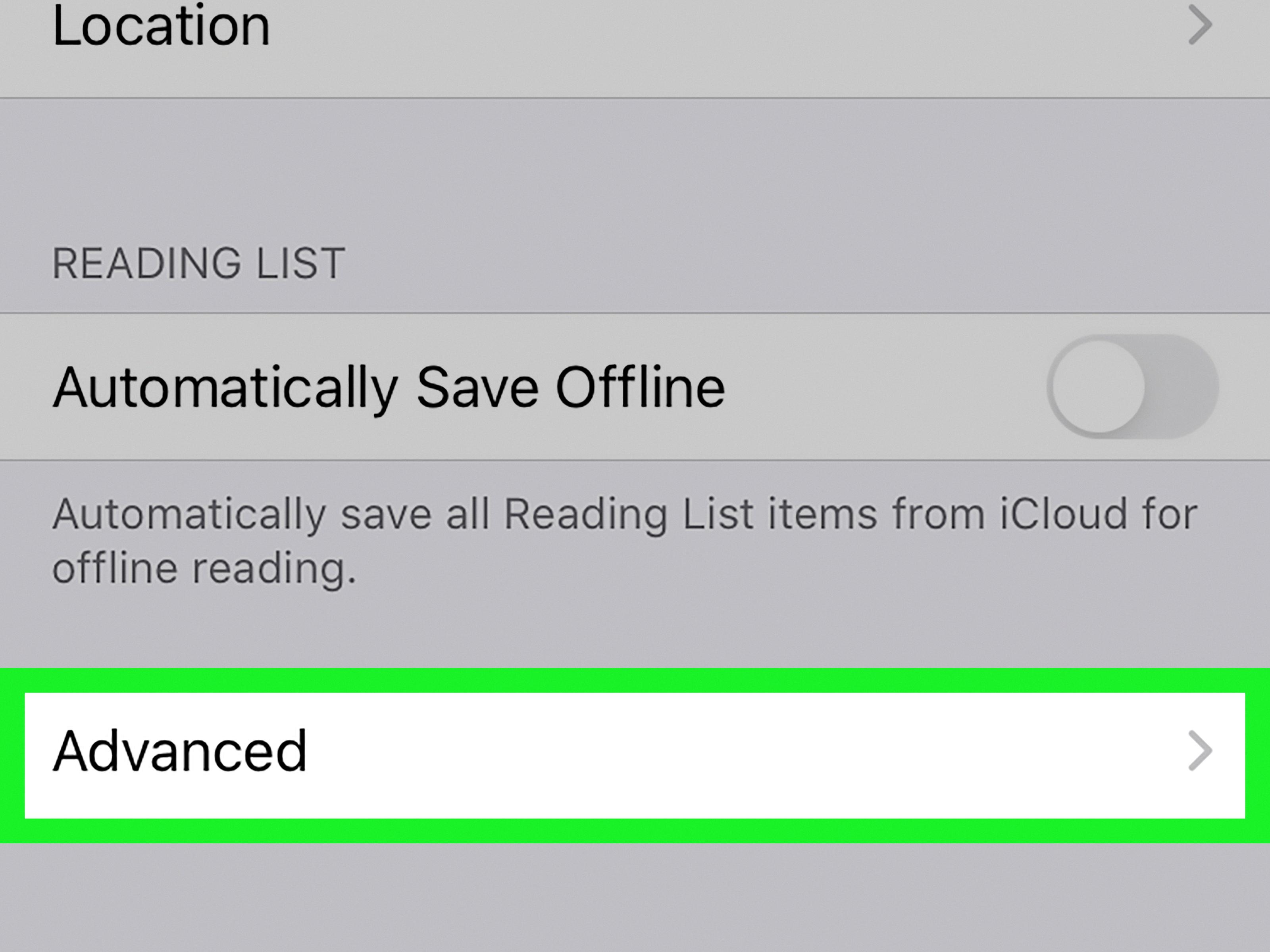
Source: wikihow.com
Customizing Safari on iPad
You can customize your Safari experience on iPad by folowing these steps:
1. Open the Safari app and tap the “+” button to open a new tab.
2. Scroll to the bottom of the page and tap Edit.
3. Choose options for your start page, such as which websites should appear when you open a new tab.
4. You can also change your Safari layout, adjust text size on websites, and change display and privacy settings from the Settings menu.
5. To access the Settings menu, go to Settings > Safari from your Home screen.
6. Here, you can make further changes to customize your Safari experience on iPad, such as blocking pop-ups or managing autofill information for web forms.
Changing Safari Browser Settings
To change your Safari browser settings, open the Safari app on your Mac and choose Safari > Preferences. On the left side of the window, you will see a list of different settings you can customize. For example, you can choose settings for Camera, Location Services, Notifications, Pop-ups, and more. Select one of these settings to customize it. You may be able to select individual websites from the list on the right to make changes for them specifically. Once you have made your desired changes in each setting, click “OK” or “Apply” to save them.
Accessing the Safari Menu
The Safari menu can be found in the Menu Bar at the top of your screen, separate from the Safari window. It is located directly beneath the Apple menu and consists of several helpful menus such as File, Edit, View, History, Bookmarks, Window, and Help. Each of tese menus provides access to various features and options within Safari. For example, you can open a new window or tab in Safari by selecting File > New Window/Tab from the Menu Bar. You can also access preferences for Safari such as changing the default search engine by selecting Preferences from the Safari menu.
Reverting Safari Tabs to Normal
To change your Safari tabs back to normal, open the Safari app, tap in the search field, then tap Show Top Address Bar or Show Bottom Tab Bar. Go to Settings > Safari, then scroll down to Tabs. Select either Tab Bar or Single Tab. Selecting Tab Bar will bring you back to the default tab view where multiple tabs are displayed along the top of your screen. Selecting Single Tab will hide all other tabs and only display the active tab.
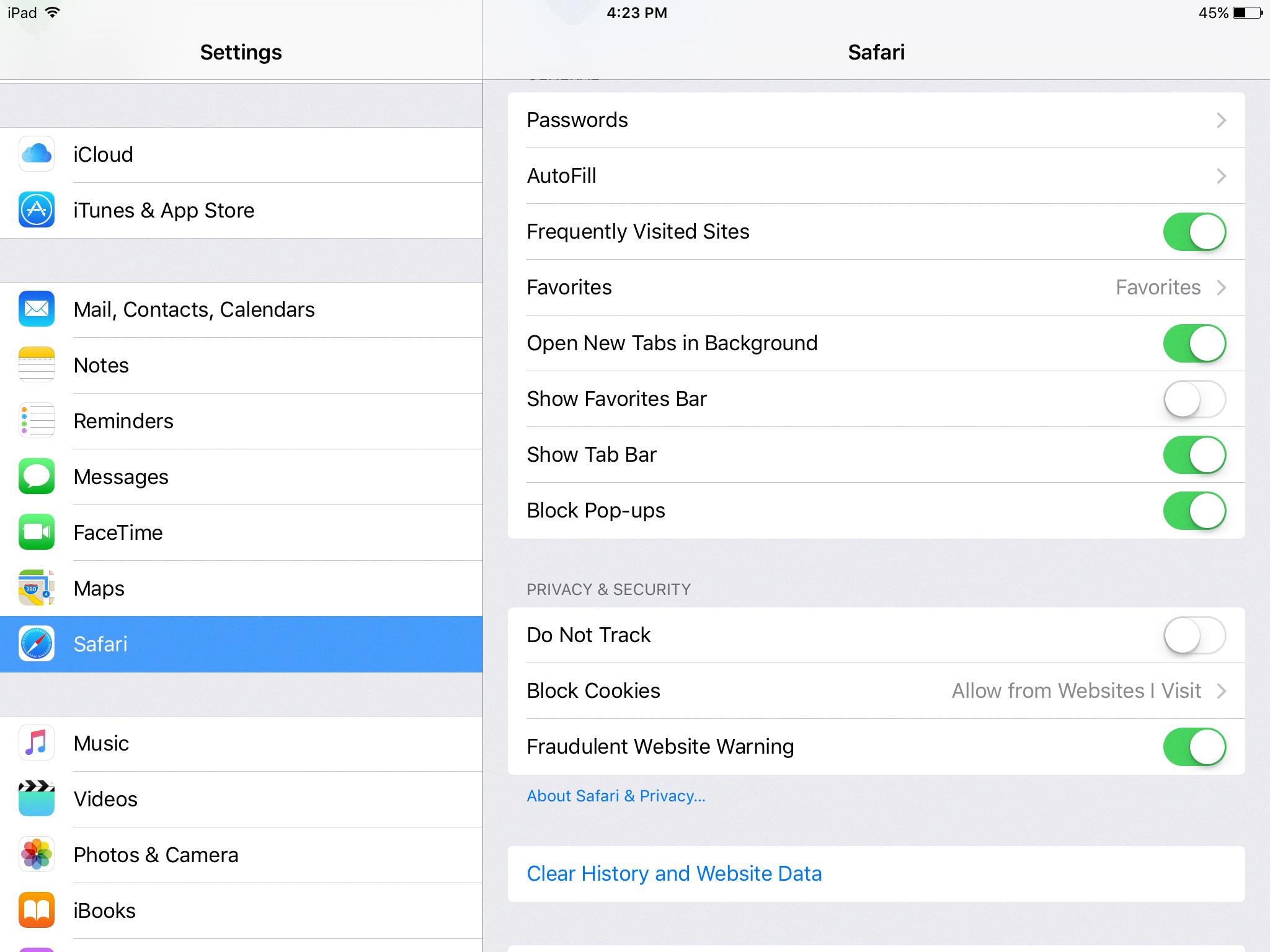
Source: discussions.apple.com
Accessing Safari Preferences
To access Safari Preferences, open the Safari app on your Mac and select ‘Safari’ in the menu bar. From there, select ‘Preferences’. This will open a window with a list of preference panes. Each pane contans different settings that you can change to customize your Safari experience. For example, the General pane lets you change your homepage, decide what to see when you open a window or tab, choose how long to keep your browsing history, and configure options for downloading files.
Changing Browser Settings on an iPad
To change your browser settings on your iPad, start by opening the Settings app. Once you’ve opened the Settings app, scroll down and tap the browser app that you want to adjust. On the next page, you will find a list of options related to your browser. You can customize these settings according to your preferences. For example, if you want to change the default search engine, look for an option labeled ‘Search Engine’ and select a different one from the list provided. You can also customize oher settings like privacy and security options or turn on/off features like pop-up blocking or tracking protection. Once you’ve made all your changes, remember to save them by tapping ‘Done’ in the upper right corner of the screen.
Restoring the Safari Menu Bar
To get your menu bar back on Safari, you’ll need to open the Safari View menu. From there, select the option to Show Toolbar. This will bring back the Safari Toolbar at the top of your screen, including all of the menu items like File, Edit, View and more.
Accessing Safari Settings on iOS
To access Safari settings on iOS, open the Settings app and tap Safari. You’ll find options for General, Privacy & Security, Autofill, Search Engine, Advanced and Website Data. In the General section you can edit your home page, block pop-ups and adjust appearance settings. The Privacy & Security section alows you to control how websites track your activity and manage permission settings. The Autofill section lets you configure auto-fill information like usernames and passwords. The Search Engine section lets you select your preferred search engine. The Advanced section includes options for JavaScript, Web Inspector and debug console. Finally, the Website Data section allows you to view data stored by websites you’ve visited.
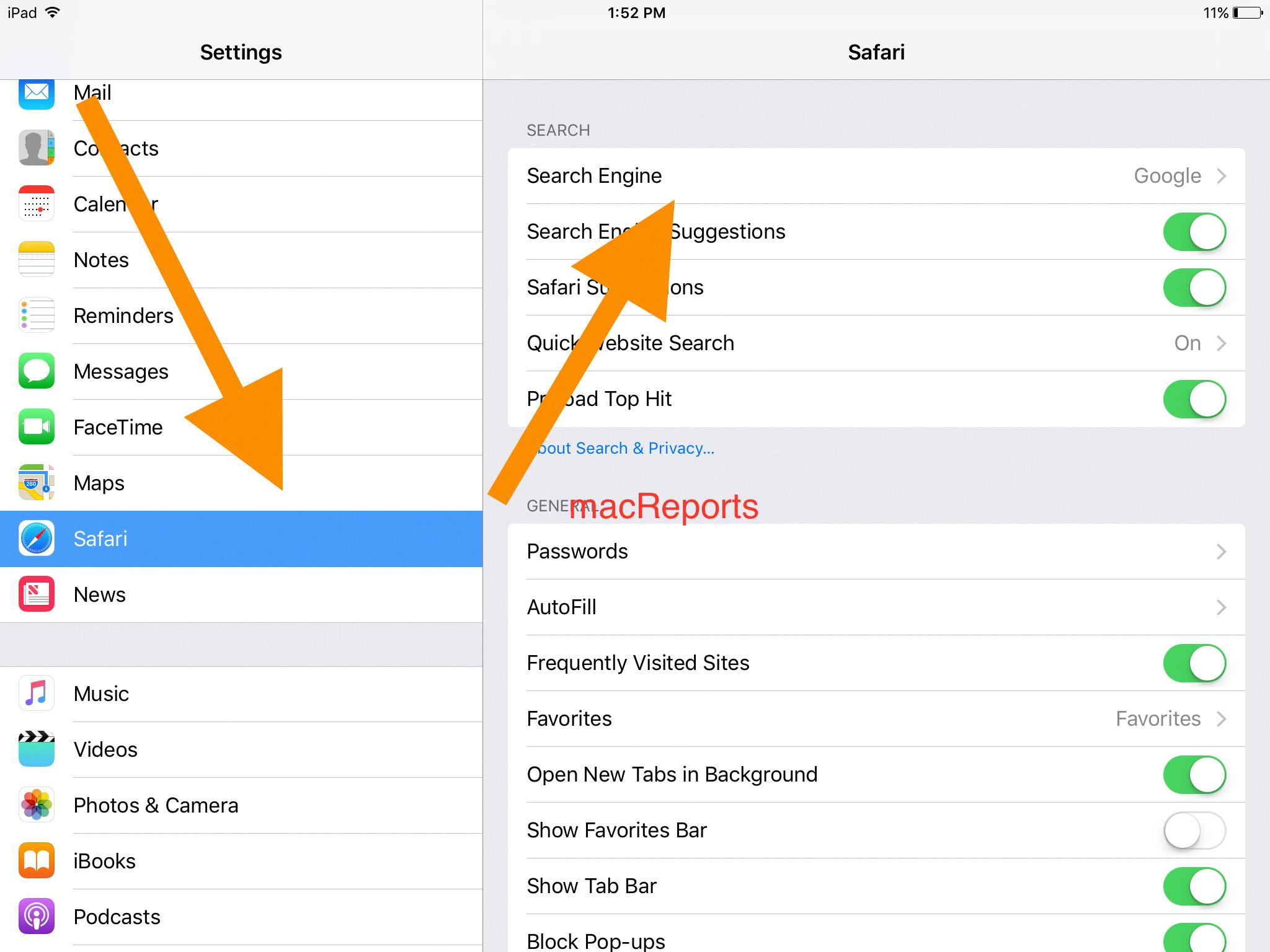
Source: macreports.com
Accessing Safari Website Settings
To access settings for a website on Safari for iOS, tap the “aA” icon in the top-left corner of the screen to reveal the Website View menu. Then tap Website Settings to open up a list of options rlated to that website. Depending on the website, you may be able to adjust such settings as notifications, camera and microphone permissions, and more.
Reverting Safari to Normal on iOS 15
In order to change Safari back to the normal iOS 15 design, you’ll need to open Settings on your iPhone. Then, go to “Safari” and scroll down util you see the option for “Single Tab”. Selecting this option will restore Safari to the classic iOS 15 design with the URL bar located at the top of the page.
Changing the Tab Layout in Safari
To change the tab layout in Safari, you first need to open the Safari menu and select Preferences. Once the Preferences window opens up, navigate to the Tabs section where you will find a Tab Layout setting. Here you can choose between two options: Compact or Separate. With Compact, your tabs and address bar will be condensed into a single row; with Separate, your tabs will be placed below the address bar. Once you’ve made your selection, simply close out of the Preferences window and your tab layout should be changed.
Checking Browser Settings
To check your browser settings, open your browser and look for a menu button. This is usually represented by three dots or lines in the top right corner of your browser window. Click this menu button and look for an option labeled “Settings”, “Preferences”, or “Options”. This will open the browser’s settings, which you can then use to customize your browsing experience. You can also access browser settings from the Tools menu in some browsers. If you’re using a mobile device, you may need to open the app’s main menu instead of a browser window.
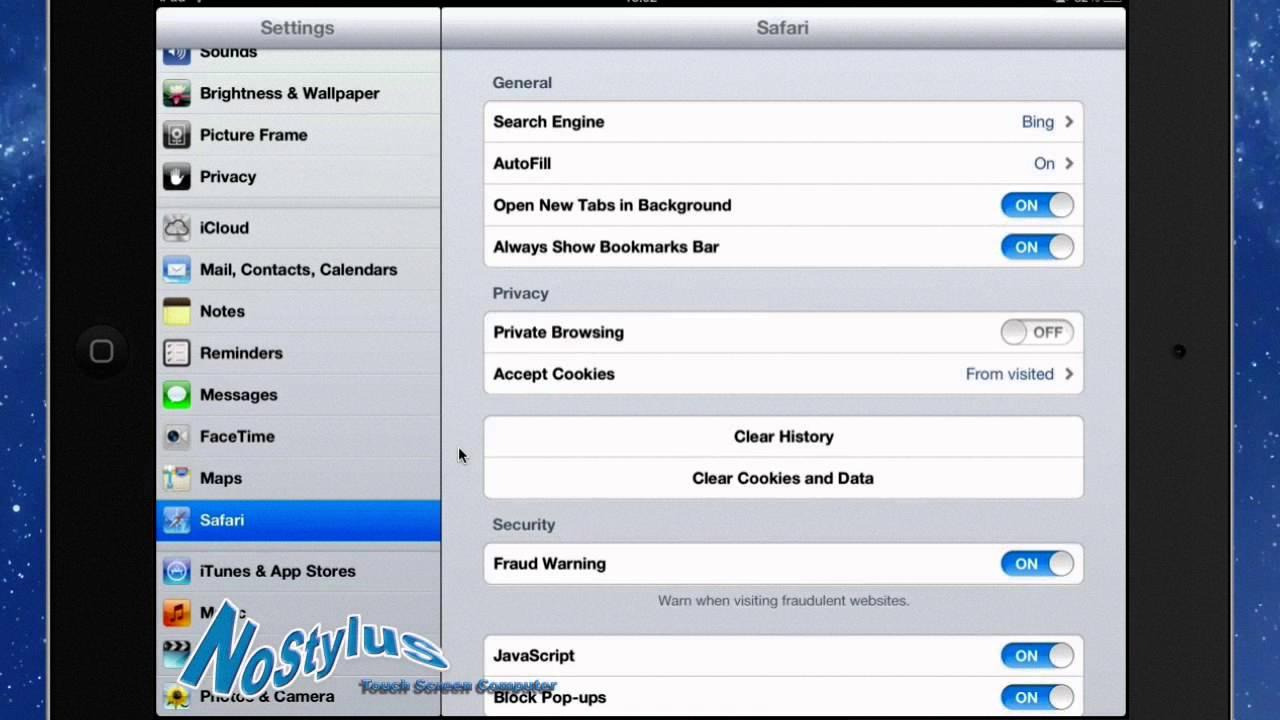
Source: youtube.com
Preventing the Safari Menu Bar from Disappearing on an iPad
The Safari menu bar on your iPad should not be disappearing, but if it is, you can try a few steps to keep it visible. First, make sure you’re not in full screen mode by tapping the two arrows in the top right of your Safari window. This will take you back to normal view. Next, go to Settings > Safari and make sure “Hide Toolbar” is disabled. Finally, if none of these steps work, try restarting your iPad by pressing and holding both the top power/sleep button and home button at the same time untl you see the Apple logo appear. Hopefully this resolves the issue!
Opening Safari Mobile Settings
In order to open Safari mobile settings, you’ll need to open the Settings app on your iPhone. Once you have opened it, scroll down and select Safari. This will open the Safari settings page, whee you can customize your preferences for things like Safari Search Engine, Privacy & Security, Autofill, and more.
Turning Off Content Blocking on Safari
To turn off content blocking on Safari, open your iPhone or iPad settings, then select Safari from the list. Under the General section, select Content Blockers. Toggle off the ad blocker and then return to the video you were watching in Safari and click ‘Continue watching’. If ad blocker is still detected, restart Safari and try again.
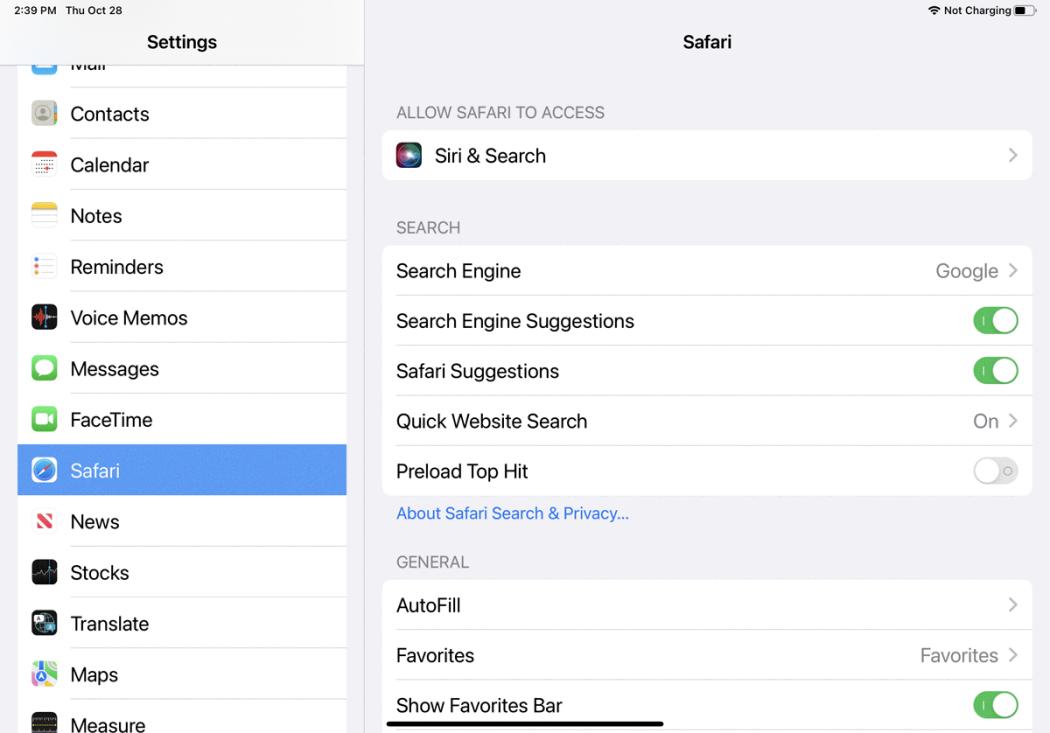
Source: pcmag.com
Exploring Changes in Safari Appearance
The new Safari has been redesigned to make the most important controls easier to access with one hand, espcially if you have an iPhone with a larger size like an iPhone 13 Pro Max. The address bar is now located at the bottom of the page, so it’s much more convenient to type in website addresses and search terms. Additionally, some of the menus have been rearranged so that they are easier to find and access. Many of the icons have also been redesigned, making them simpler and easier to understand at a glance. All of these changes should make browsing the web on your iPhone smoother and more intuitive than ever before.
Conclusion
The Safari settings on an iPad are a great way to customize your browsing experience. With a few simple taps, you can enable and disable features such as sharing your location, blocking pop-ups, controlling content blockers, and more. You can also control the appearance of your browser by adjusting font size, autofill settings, and oher preferences. With Safari Settings on your iPad, you can ensure that your browsing experience is secure and tailored to your specific needs.

